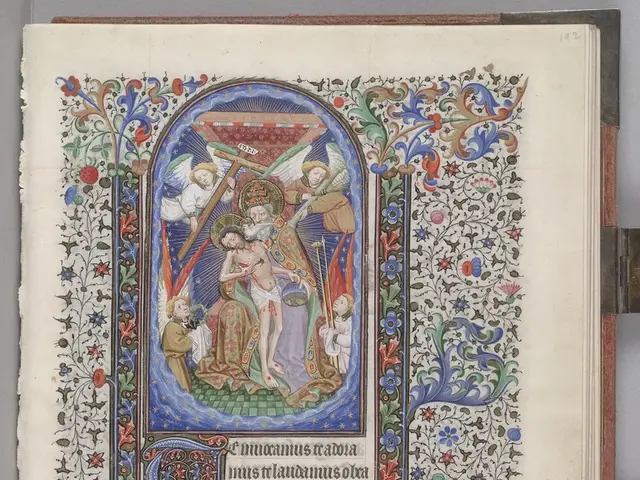Surveillance at Hajj: Saudis Utilize AI, Drones, and Numerous Cameras for Pilgrim Security
In the bustling city of Mecca, cutting-edge technology is taking center stage to monitor the masses of pilgrims attending one of the world's largest religious events.
Leading the charge is AI technology, working tirelessly to scrutinize more than 15,000 cameras installed throughout the city. This technological marvel deciphers abnormal crowd movements and detects potential bottlenecks, serving as a potential lifesaver at crowded events with a dismal history of deadly stampedes.
Transportation is another area where technology reigns supreme, with AI aiding in guiding over 20,000 buses that ferry pilgrims between holy sites. All of this forms part of Saudi Arabia's impressive tech arsenal, ensuring a smoother experience for the 1.4 million faithful from around the globe.
Mohamed Nazier, CEO of the General Transport Centre at the Royal Commission for Mecca, elaborated, "In our traffic control room, we harness specialized cameras that are fortified with AI layers to analyze movements, crowded areas, and predict behaviors."
A central command center, adorned with screens and maps, serves as the nerve center for high-tech monitoring, with about a dozen staff members diligently monitoring crowd movements around the holy sites. On nearby hillsides, cameras resembling little white robots are filming buildings, roads, and pathways along the hajj route.
The objective behind this continuous monitoring is two-fold—averting traffic collisions with pedestrians and ensuring that buses are readily available to minimize walking time during the scorching desert heat.
After a series of tragic disasters, such as the stampede in 2015 that claimed up to 2,300 lives during the "stoning of the devil" ritual, Mecca and its surroundings wisely decided to implement advanced technology to enhance safety measures. Technology like AI helps in "determining the flow on the road to the holy sites, detecting emergency situations even before they occur," says Mohammed al-Qarni, who oversees the hajj and the year-round umrah pilgrimage at the transport center.
The system even succeeded in spotting when the Grand Mosque had reached its maximum capacity during the holy month of Ramadan, quickly halting the flow and regulating the process.
Technology extends beyond logistics as well. Thermal imaging is used to locate unregistered pilgrims, who made up a significant majority of the 1,301 deaths in sweltering conditions last year. To tackle this issue, a fleet of camera-equipped drones monitors entrances into Mecca, with AI and other tools like drones and thermal imaging cameras at the helm.
Meanwhile, "smart thermal imaging" is being employed by Saudi Special Forces for Roads Security to secure the perimeter of Mecca and the holy sites, accentuating the tech-intensive approach towards the hajj's safety and efficiency.
Artificial intelligence is not only monitoring crowds to prevent potential bottlenecks and stampedes but also aiding in guiding buses to ensure a smoother experience for pilgrims. In the traffic control room, AI-fortified cameras analyze movements and predict behaviors to minimize traffic collisions with pedestrians and ensure the availability of buses during the scorching desert heat. Furthermore, thermal imaging technology is being used to locate unregistered pilgrims, with drones and thermal imaging cameras assisting in securing the perimeter of Mecca and the holy sites, demonstrating the extensive use of technology in enhancing safety measures at religious events.




